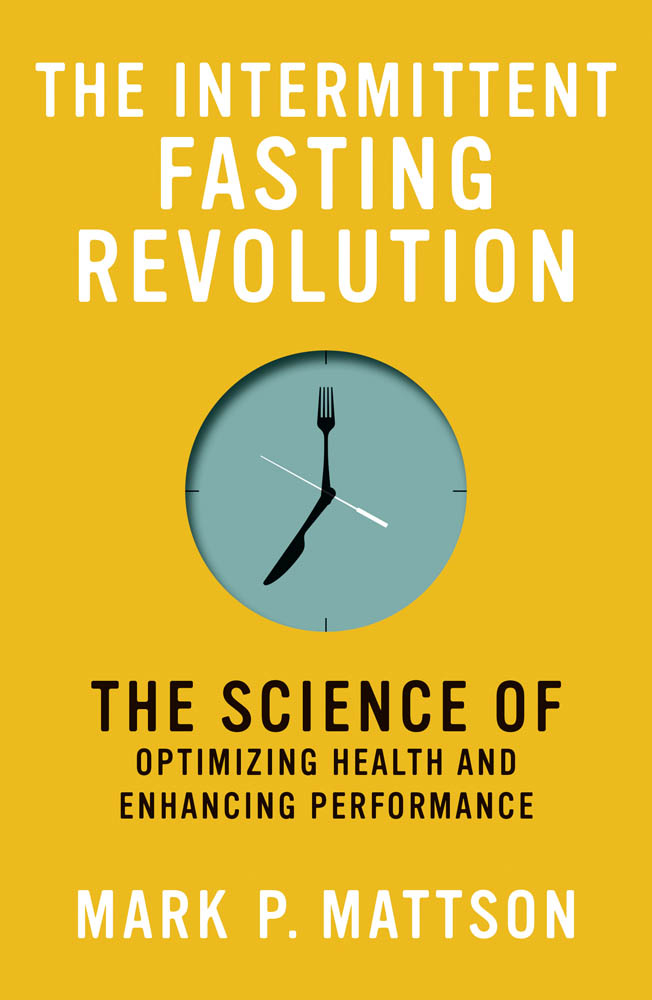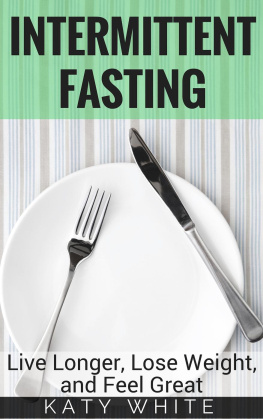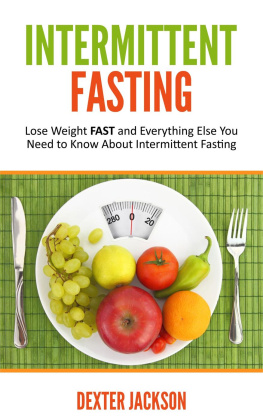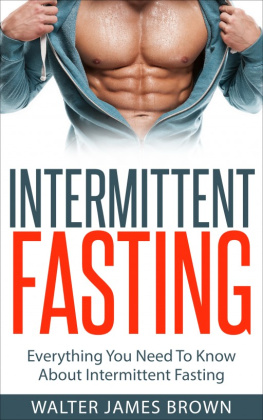Contents
Guide
Pagebreaks of the print version

THE INTERMITTENT FASTING REVOLUTION
The Science of Optimizing Health and Enhancing Performance
MARK P. MATTSON
The MIT Press
Cambridge, Massachusetts
London, England
2022 Massachusetts Institute of Technology
All rights reserved. No part of this book may be reproduced in any form by any electronic or mechanical means (including photocopying, recording, or information storage and retrieval) without permission in writing from the publisher.
The MIT Press would like to thank the anonymous peer reviewers who provided comments on drafts of this book. The generous work of academic experts is essential for establishing the authority and quality of our publications. We acknowledge with gratitude the contributions of these otherwise uncredited readers.
Library of Congress Cataloging-in-Publication Data
Names: Mattson, Mark Paul, author.
Title: The intermittent fasting revolution : the science of optimizing health and enhancing performance / Mark P. Mattson.
Description: Cambridge, Massachusetts : The MIT Press, 2021. | Includes bibliographical references and index.
Identifiers: LCCN 2021001823 | ISBN 9780262046404 (hardcover)
Subjects: LCSH: Intermittent fasting. | Longevity. | Nutrition.
Classification: LCC RM222.2 .M3792 2021 | DDC 613.2/5dc23
LC record available at https://lccn.loc.gov/2021001823
d_r2
To my loving wife Joanne, son Elliot, and daughter Emma, who have helped me immensely through thick and thin
Contents
List of Figures
Diagram showing changes in blood glucose and ketone levels during a two-day period in people with three different eating patterns. A typical American eating pattern of breakfast, lunch, and dinner plus an evening snack results in an elevation of glucose levels every time the person eats. Ketone levels do not rise because liver glucose stores are replenished every time the person eats. In the case of a person who fasts every other day, glucose levels will remain low, and ketone levels will rise on the fasting days. In the case of a person who fasts for 18 hours every day by consuming food only between noon and 6:00 p.m., ketone levels will rise during the morning hours every day.
Food overabundancewhich results in not having to use ones brain to acquire foodis believed to be the reason that brain size of domesticated animals and modern-day humans (since the Agricultural Revolution) has decreased compared to the brain size of their predecessors that lived in food-sparse environments.
Historical proponents of fasting. Edward Dewey espoused the benefits of short daily fasts, what is now referred to as daily time-restricted feeding, and Linda Hazzard and Otto Buchinger established clinics for long-term fasting. Buchinger carefully monitored the health of his patients, but Hazzard did not.
The hallmarks of brain aging, with dysregulation of cellular energy metabolism shown in the ring around the center. The authors research has provided evidence that intermittent fasting can counteract these hallmarks of aging. A modified version of this illustration by the author was published in M. P. Mattson and T. V. Arumugam, Hallmarks of Brain Aging: Adaptive and Pathological Modification by Metabolic States,Cell Metabolism27 (2019): 11761199.
Sources of the production of damaging free radicals in cells. The major source of oxygen free radicals is the mitochondrial electron transport chain, where the superoxide anion radical is formed. Superoxide can be converted to hydrogen peroxide (which is not a free radical) by enzymes called superoxide dismutases. In the presence of even very low amounts of free (ionic) iron or copper, hydroxyl radical is produced from hydrogen peroxide. Another source of free radicals is the enzyme nitric oxide synthase, which is activated in the cell cytoplasm by ionic calcium. Nitric oxide can interact with superoxide to produce the free radical peroxynitrite. Hydroxyl radical, nitric oxide, and peroxynitrite can attack and damage DNA, proteins, and membranes of cells. However, studies have shown that intermittent fasting can protect cells against damage by free radicals and stimulate the repair of damaged molecules.
Bill Markesbery (circa 1992) and an example of a brain section from an Alzheimers patient that he stained to visualize amyloid plaques (arrowhead) and neurofibrillary tangles (arrow). Markesbery was the authors mentor and collaborator at the Sander-Brown Center on Aging at the University of Kentucky.
Mechanisms by which intermittent fasting improves the function and stress resistance of organ systems throughout the body. BHB = beta-hydroxybutyrate; AcAc = acetoacetate.
The authors vision of how lifestyle factors may either promote or protect against the degeneration of neuronal networks and consequent cognitive impairment in Alzheimers disease.
During fasting, liver glucose stores (glycogen) are depleted, and blood glucose levels remain low. Next, free fatty acids (FFA) are released into the blood from fat cells. The FFA are then transported into liver cells and converted to the ketones acetoacetate and beta-hydroxybutyrate (BHB). Blood ketone levels rise, and the ketones are transported into cells throughout the body and brain, where they are metabolized to acetyl coenzyme A (CoA), which is then used to produce adenosine triphosphate (ATP). The authors laboratory found that BHB can also stimulate the production of brain-derived neurotrophic factor (BDNF) in neurons. BDNF facilitates learning and memory and protects neurons against stress. Additional benefits of fasting for cells in the brain, heart, and skeletal muscle are the stimulation of mitochondrial biogenesis and autophagy, which effectively remove damaged molecules and increase the number of healthy mitochondria in the cells. TCA = tricarboxylic acid; OHB = hydroxybutyrate.
Graphic representation of hormesis showing a biphasic curve in which moderate amounts of fasting, exercise, and noxious phytochemicals are beneficial for health, whereas excessive amounts of these environmental challenges can adversely affect health.
A photograph of a single embryonic rat hippocampal neuron that had been growing in culture for three days, during which time a long branching axon and numerous shorter dendrites grew from the cell body. By experimenting with such cultured neurons, the author established fundamental mechanisms by which neurotransmitters and neurotrophic factors regulate the formation of neuronal networks and affect the vulnerability of neurons to degeneration in experimental models of relevance to Alzheimers disease.
Illustration showing the two major types of neurons that form the core neuronal circuitry throughout the brain. Large neurons that deploy the excitatory neurotransmitter glutamate have long axons that project to other neurons within the same brain region or to neurons in other brain regions on the same or opposite side of the brain. Smaller neurons that utilize the inhibitory neurotransmitter GABA have relatively short axons that form synapses on glutamatergic neuronstheir activity prevents uncontrolled hyperexcitability of neuronal circuits.
Photograph of a drawing conceptualized by Stan Kater in 1988 and done by Dennis Giddings, who was a member of Katers laboratory when the author was a postdoc there. The drawing shows the development of a neuron generated from a stem cell (












